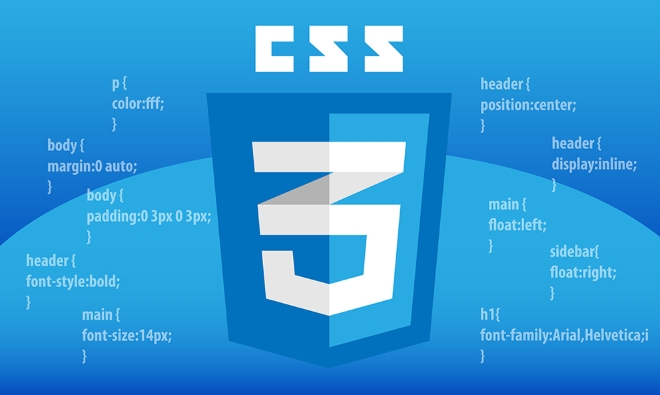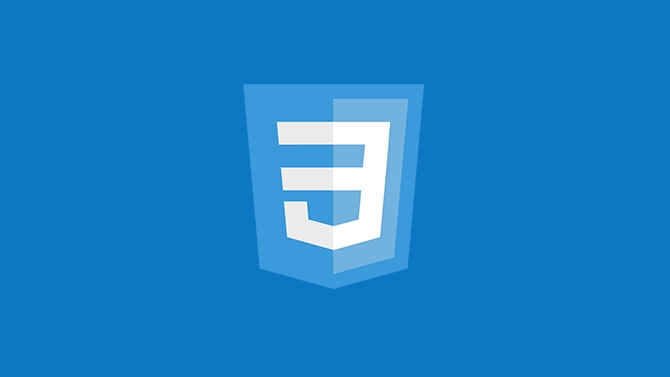Responsive typography with clamp() CSS tutorial
Jul 14, 2025 am 03:09 AMclamp() is a function used in CSS to create responsive typesetting, allowing the definition of minimum, preferred and maximum values, with the syntax of clamp(MIN, VAL, MAX); for example, font-size: clamp(16px, 2vw 1rem, 24px) indicates that the font size changes with the viewport but limits the range; recommended writing methods such as h1 { font-size: clamp(1.5rem, 5vw, 3rem); } Ensure readability under different screens; in addition to fonts, it can also be used for attributes such as line-height, padding, margin, width, etc.; such as p { padding-inline: clamp(1rem, 5%, 2rem); } Control internal margins; mainstream browsers all support clamp(), and setting parameters reasonably can reduce media queries and improve visual consistency.

Responsive typesetting is an important part of modern web design, and the emergence of clamp() function in CSS makes this more flexible and concise. It allows you to define a font size that is smoothly adjusted as the viewport changes, rather than relying on breakpoints or complex calculations.

What is clamp()?
clamp() is a CSS function that allows you to set the minimum, preferred and maximum range of a value. Its syntax is:

clamp(MIN, VAL, MAX)
in:
- MIN is the minimum value;
- VAL is the preferred value (usually calculated dynamically);
- MAX is the maximum value.
For example:

font-size: clamp(16px, 2vw 1rem, 24px);
This means that the font size will start at 16px and grow with the viewport width, but not exceed 24px.
How to use clamp() to make responsive font size?
The core idea of using clamp() to achieve responsive font size is: set a basic font size and make it scale according to the viewport width while maintaining readability and aesthetics.
The recommended writing method is as follows:
h1 {
font-size: clamp(1.5rem, 5vw, 3rem);
}This means:
- When the screen is small, the title will not be less than
1.5rem; - At medium screen size, it scales at
5vw; - After arriving at the large screen, the font will not exceed
3rem.
Tips: The
vwunit is very useful, but it is not the only option. You can use more flexible expressions in combination withremandvw, such as2vw 1rem, which can retain a certain base size on the small screen.
Where can clamp() be applied?
Although most commonly used for font sizes, clamp() can be used in any CSS attribute that accepts length, frequency, angle and other types, such as:
- Line-height
- Padding
- Margin
- Element width (width)
For example, if you want the left and right margins of the paragraph to increase as the screen widens, but don't want it to be too big, you can write it like this:
p {
padding-inline: clamp(1rem, 5%, 2rem);
}This not only ensures that the content will not be pasted, but also avoids the problem of too centering the text under the large screen.
How about browser compatibility?
Currently, mainstream browsers support clamp() , including Chrome, Edge, Firefox, Safari and mobile browsers. If you need to be compatible with older versions of IE, that may not be a good fit, but for most modern projects, this is not a problem.
Note: If you use an expression like
calc(), make sure that the writing format is correct, such as spaces cannot be omitted:font-size: clamp(1rem, calc(1rem 2vw), 2rem);
Basically that's it. Using
clamp()well can not only reduce the use of media queries, but also make the page look more natural on different devices. The key is to set MIN, VAL and MAX reasonably to find the visual balance point.The above is the detailed content of Responsive typography with clamp() CSS tutorial. For more information, please follow other related articles on the PHP Chinese website!

Hot AI Tools

Undress AI Tool
Undress images for free

Undresser.AI Undress
AI-powered app for creating realistic nude photos

AI Clothes Remover
Online AI tool for removing clothes from photos.

Clothoff.io
AI clothes remover

Video Face Swap
Swap faces in any video effortlessly with our completely free AI face swap tool!

Hot Article

Hot Tools

Notepad++7.3.1
Easy-to-use and free code editor

SublimeText3 Chinese version
Chinese version, very easy to use

Zend Studio 13.0.1
Powerful PHP integrated development environment

Dreamweaver CS6
Visual web development tools

SublimeText3 Mac version
God-level code editing software (SublimeText3)

Hot Topics
 What is Autoprefixer and how does it work?
Jul 02, 2025 am 01:15 AM
What is Autoprefixer and how does it work?
Jul 02, 2025 am 01:15 AM
Autoprefixer is a tool that automatically adds vendor prefixes to CSS attributes based on the target browser scope. 1. It solves the problem of manually maintaining prefixes with errors; 2. Work through the PostCSS plug-in form, parse CSS, analyze attributes that need to be prefixed, and generate code according to configuration; 3. The usage steps include installing plug-ins, setting browserslist, and enabling them in the build process; 4. Notes include not manually adding prefixes, keeping configuration updates, prefixes not all attributes, and it is recommended to use them with the preprocessor.
 CSS tutorial for creating a sticky header or footer
Jul 02, 2025 am 01:04 AM
CSS tutorial for creating a sticky header or footer
Jul 02, 2025 am 01:04 AM
TocreatestickyheadersandfooterswithCSS,useposition:stickyforheaderswithtopvalueandz-index,ensuringparentcontainersdon’trestrictit.1.Forstickyheaders:setposition:sticky,top:0,z-index,andbackgroundcolor.2.Forstickyfooters,betteruseposition:fixedwithbot
 CSS tutorial for creating loading spinners and animations
Jul 07, 2025 am 12:07 AM
CSS tutorial for creating loading spinners and animations
Jul 07, 2025 am 12:07 AM
There are three ways to create a CSS loading rotator: 1. Use the basic rotator of borders to achieve simple animation through HTML and CSS; 2. Use a custom rotator of multiple points to achieve the jump effect through different delay times; 3. Add a rotator in the button and switch classes through JavaScript to display the loading status. Each approach emphasizes the importance of design details such as color, size, accessibility and performance optimization to enhance the user experience.
 CSS tutorial focusing on mobile-first design
Jul 02, 2025 am 12:52 AM
CSS tutorial focusing on mobile-first design
Jul 02, 2025 am 12:52 AM
Mobile-firstCSSdesignrequiressettingtheviewportmetatag,usingrelativeunits,stylingfromsmallscreensup,optimizingtypographyandtouchtargets.First,addtocontrolscaling.Second,use%,em,orreminsteadofpixelsforflexiblelayouts.Third,writebasestylesformobile,the
 How to create an intrinsically responsive grid layout?
Jul 02, 2025 am 01:19 AM
How to create an intrinsically responsive grid layout?
Jul 02, 2025 am 01:19 AM
To create an intrinsic responsive grid layout, the core method is to use CSSGrid's repeat(auto-fit,minmax()) mode; 1. Set grid-template-columns:repeat(auto-fit,minmax(200px,1fr)) to let the browser automatically adjust the number of columns and limit the minimum and maximum widths of each column; 2. Use gap to control grid spacing; 3. The container should be set to relative units such as width:100%, and use box-sizing:border-box to avoid width calculation errors and center them with margin:auto; 4. Optionally set the row height and content alignment to improve visual consistency, such as row
 How to center an entire grid within the viewport?
Jul 02, 2025 am 12:53 AM
How to center an entire grid within the viewport?
Jul 02, 2025 am 12:53 AM
To make the entire grid layout centered in the viewport, it can be achieved by the following methods: 1. Use margin:0auto to achieve horizontal centering, and the container needs to be set to set the fixed width, which is suitable for fixed layout; 2. Use Flexbox to set the justify-content and align-items properties in the outer container, and combine min-height:100vh to achieve vertical and horizontal centering, which is suitable for full-screen display scenarios; 3. Use CSSGrid's place-items property to quickly center on the parent container, which is simple and has good support from modern browsers, and at the same time, it is necessary to ensure that the parent container has sufficient height. Each method has applicable scenarios and restrictions, just choose the appropriate solution according to actual needs.
 What is feature detection in CSS using @supports?
Jul 02, 2025 am 01:14 AM
What is feature detection in CSS using @supports?
Jul 02, 2025 am 01:14 AM
FeaturedetectioninCSSusing@supportschecksifabrowsersupportsaspecificfeaturebeforeapplyingrelatedstyles.1.ItusesconditionalCSSblocksbasedonproperty-valuepairs,suchas@supports(display:grid).2.Thismethodensuresfuturecompatibilityandavoidsrelianceonunrel
 Addressing CSS Browser Compatibility issues and prefixes
Jul 07, 2025 am 01:44 AM
Addressing CSS Browser Compatibility issues and prefixes
Jul 07, 2025 am 01:44 AM
To deal with CSS browser compatibility and prefix issues, you need to understand the differences in browser support and use vendor prefixes reasonably. 1. Understand common problems such as Flexbox and Grid support, position:sticky invalid, and animation performance is different; 2. Check CanIuse confirmation feature support status; 3. Correctly use -webkit-, -moz-, -ms-, -o- and other manufacturer prefixes; 4. It is recommended to use Autoprefixer to automatically add prefixes; 5. Install PostCSS and configure browserslist to specify the target browser; 6. Automatically handle compatibility during construction; 7. Modernizr detection features can be used for old projects; 8. No need to pursue consistency of all browsers,






